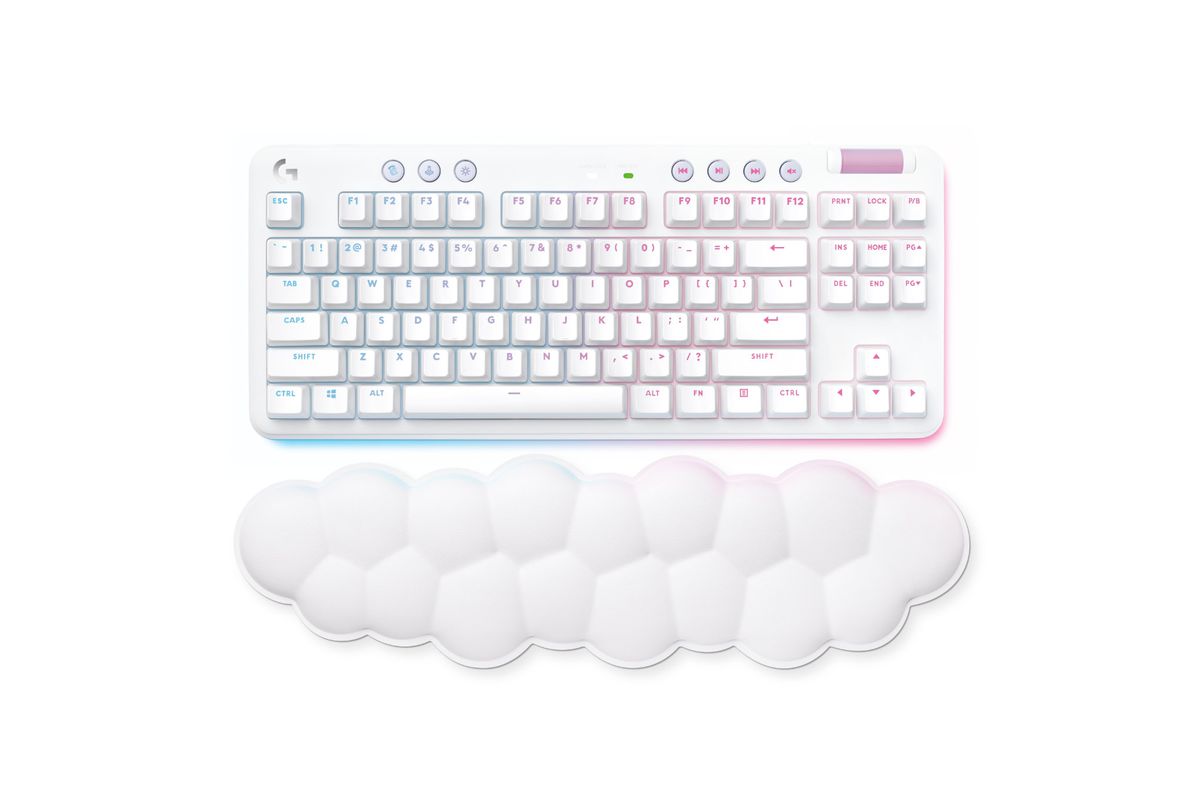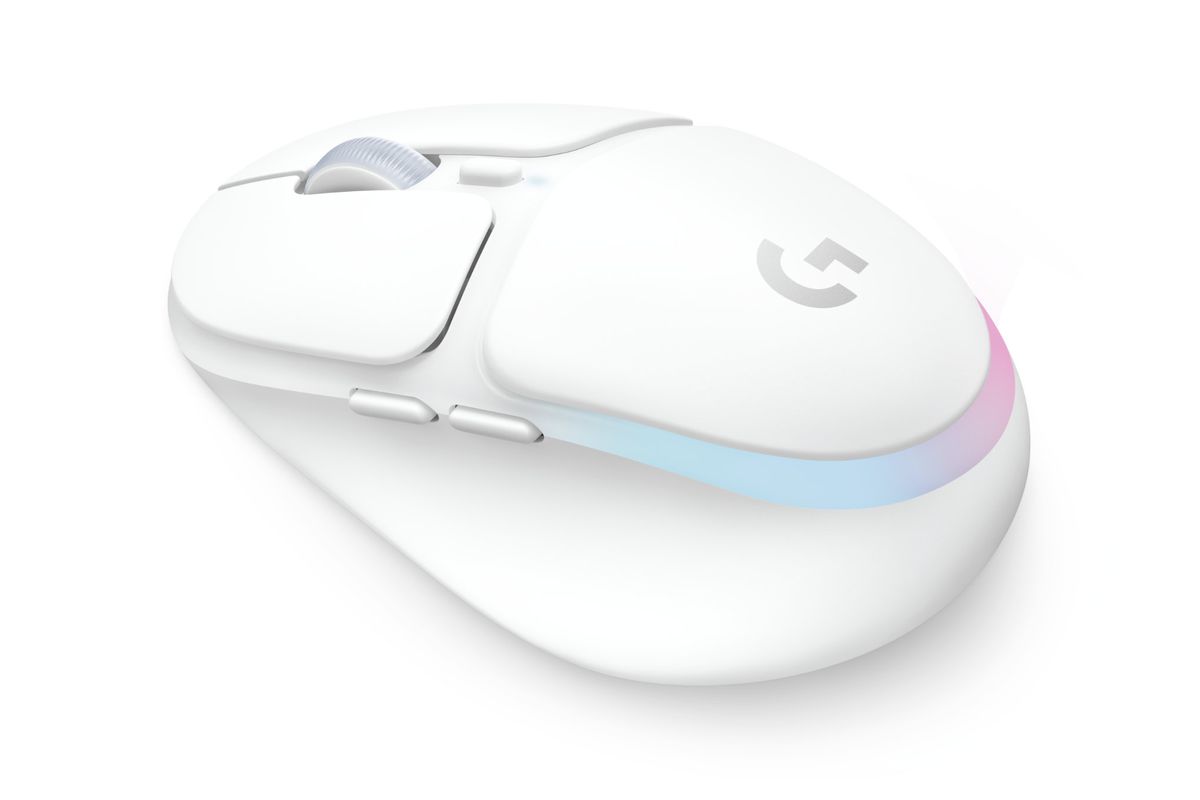Logitech’s new “gender-inclusive” PC gaming accessories come with the pink tax
Logitech has announced a lineup of PC gaming accessories that are designed to be more gender-inclusive — and specifically geared toward women — than any of its previous releases. Companies shouldn’t be trying to market consumer technology by gender in 2022 and should instead recognize the wide variety of tastes and physical needs consumers have. But Logitech’s gone and done it anyway.
And the gadgets in the Aurora collection do seem cool, and notably, they’re new — not just new colorways of existing products. But aside from a few interesting features across the entirety of the Aurora collection, it still feels like a case of the pink tax at work.
With its latest collection of gaming accessories (and the many pricey add-ons you can purchase to customize them), Logitech wants to let you know that it now recognizes under-represented groups… the same groups that it has largely ignored for years.
A wide variety of genders enjoy playing games and using all the accessories required, but many peripheral companies, Logitech included, have spent a very long time designing products for a very specific type of gamer: one with larger than average hands and who is comfortable using peripherals decked out in dark colors and RGB lighting.
Logitech has slowly realized that not everything needs to look like it comes from the office IT department or from wherever the “gamer aesthetic” emerged. It started offering accessories with more rounded corners and fun colors in the last few years. The Aurora collection focused more on gaming than the productivity-oriented peripherals previously launched. Only, in addition to neat looks that lean on “gender-inclusivity” marketing, this collection has beyond-accessible prices and surprisingly lousy battery life claims.
The head of the class in terms of price and impressive features is the $229.99 G735 wireless headset. It looks like a more whimsical version of the G Pro X model, clad in white with RGB LEDs tracing around the perimeter of its bulbous, rotating earcups. Like the much more affordable ($50 or so) G435 wireless headset, the G735 features braille on each sidearm to identify left from right, which is a great accessibility feature that more companies should copy. Logitech claims that the G735’s design is more inclusive because it can accommodate smaller heads and things like small earrings and glasses. While that’s technically true, it’s weird that it apparently only makes its other headsets for people with giant heads and perfect vision.
The G735 features dual wireless connectivity, the ability to connect via 2.4GHz and, say, your phone via Bluetooth. Logitech says that the G735 can last around 16 hours with the LED lighting on and at 50 percent volume. Most wireless headsets these days tout day-long battery life, at least, so this is a disappointing figure. Turning off the lighting apparently bumps it up to around a 56-hour lifespan per charge.

The $199.99 wireless G715, alongside the $169.99 wired G713, are tenkeyless models that feature media keys, a volume wheel, and a whole lot of RGB LEDs. In addition to backlighting beneath each of their double-shot PBT keycaps, they have LEDs surrounding the keyboard to give off an aura. Logitech says you’ll be able to choose between tactile, linear, or clicky mechanical GX switches at the time of purchase.
The G715 can tether wirelessly to the included Lightspeed 2.4GHz dongle or connect via Bluetooth. Logitech says you can expect around 25 hours of battery per charge. Like the headset, that’s on the low end of the spectrum for longevity, considering its high price.

Lastly, the $99.99 G705 wireless mouse is the first mouse that Logitech says was “intentionally” designed for players with smaller hands. From one angle, it looks like your ordinary gaming mouse, but from the angle that exposes its two thumb buttons, it looks more like an ergonomic mouse with its contoured thumb rest. It has a “gaming-grade” sensor (Logitech didn’t confirm the exact sensor ahead of publication) with up to 8,200 DPI of sensitivity, and it can last up to 40 hours with the LEDs enabled. That battery life isn’t great. If it sounds like I’m beating a dead horse, it’s because I am.
Buying Logitech accessories is rarely affordable, and the Aurora collection is no exception. It’ll cost you $499.97 (assuming you bought the wired G713, not the G715 that’s $30 more) to purchase each of the three items, but why stop there? There are add-ons to buy, too!
- The G735 comes in white, but you can purchase a different colored boom microphone bundled with two ear pads (in pink or neon green) for $20.
- As for the keyboards, you can purchase top plates for either keyboard for $20, and don’t forget a $40 set of keycaps.
- For the mouse, there are two accessories to buy, including a $29.99 15.75 x 18-inch mousepad and a $40 heart-shaped carrying case for both the G735 headset and the G705 mouse.
- If you’re all in on Logitech’s inclusive lineup and you purchase one of each add-on, you’ll pay at least $649.97.
Many tech companies, including Logitech, love to explain to the press how each of its new gadgets is the byproduct of a lot of user research, testing, and collaboration with the intended audience as if those are the ingredients that will guarantee a great product that’s angled in an authentic way. The team behind this collection seemed excited by the idea that its new products will make some people feel seen, and honestly, that’s great. Design that’s too focused on one very specific group makes for products that feel repetitive and potentially off-putting. Logitech making gaming mice for smaller hands and headsets that can be worn with eyeglasses are all good things. Making gaming less insular is a very good thing.
But it’s the crummy-sounding battery life — because Logitech doesn’t want to solve the problem of smaller gadgets requiring less space for batteries — that’s a problem. It’s the high price that’s a problem.
If your target audience can’t afford the product or use it for the same amount of time as something cheaper, then how inclusive or accessible is it, really?
Read the full article Here


